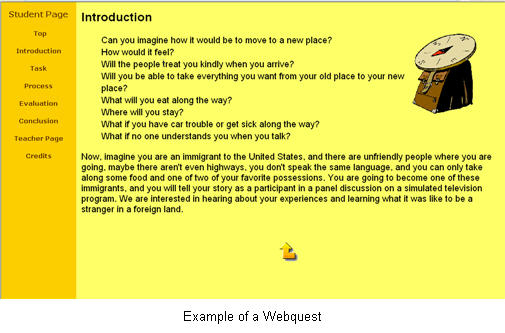A WebQuest is a specific kind of web-based learning activity. It was developed by Bernie Dodge, a professor of educational technology at San Diego State University. WebQuests provide students with the opportunity to work independently or in small group activities that incorporate research, problem solving, and application of basic skills. This teacher-created lesson guides student research using the Internet while incorporating skills such as problem solving.
The following six components are essential for implementing WebQuests in the classroom. Additional information on WebQuests can be located at The WebQuest Page at San Diego State University.
- Introduction
- The first component provides the learner with background on the WebQuest activity to be completed. It is important that the WebQuest be related to student interests, ideas, or past experiences.
- Task
- The second component describes what the learners will have accomplished at the end of the WebQuest. The main research question is developed for the learner. The teacher may want to show an example of a completed WebQuest.
- Process
- During the third component, the teacher suggests the steps the learners should go through in completing the task.
- Resources
- The fourth component consists of a list of resources, provided by the teacher, that will assist the learner in accomplishing the task.
- Evaluation
- The fifth component uses a rubric, an established set of rules or guidelines, for evaluating students’ work. It is important that the standards be clear, consistent, and specific.
- Conclusion
- During the final component, students are provided with the opportunity for reflection and summation about the experience. Students should be encouraged to reflect about the process, to extend, and generalize what was learned.
